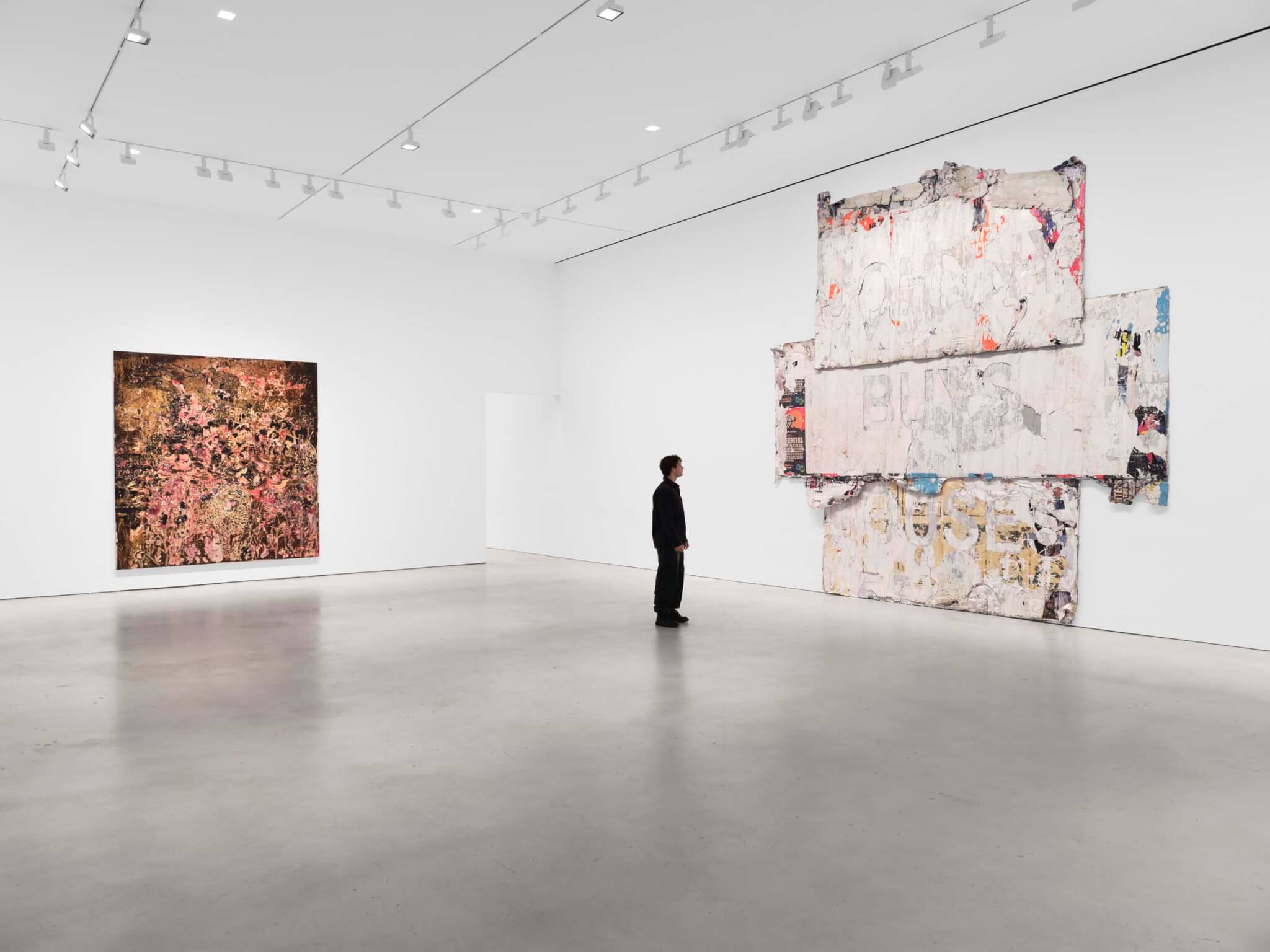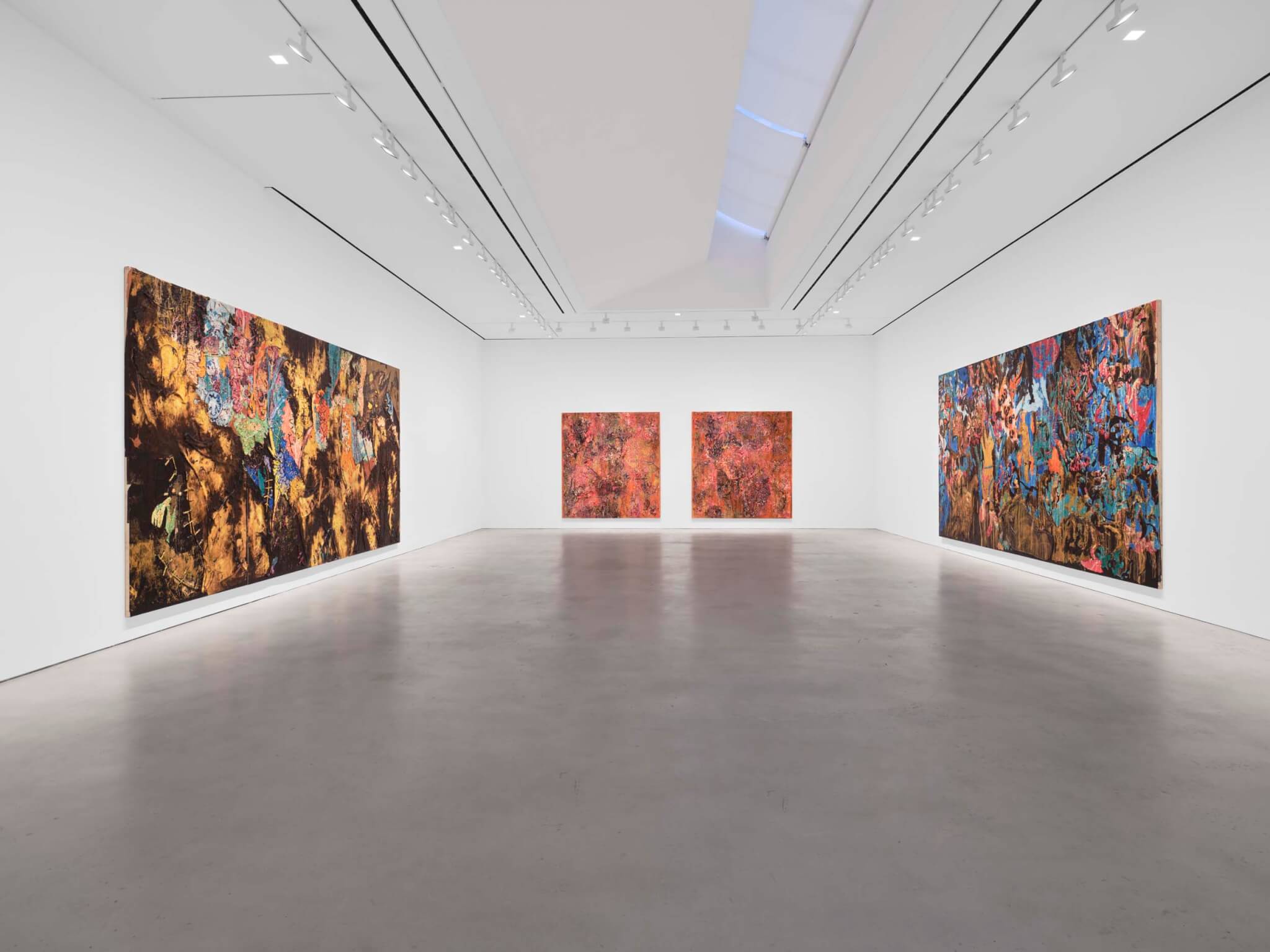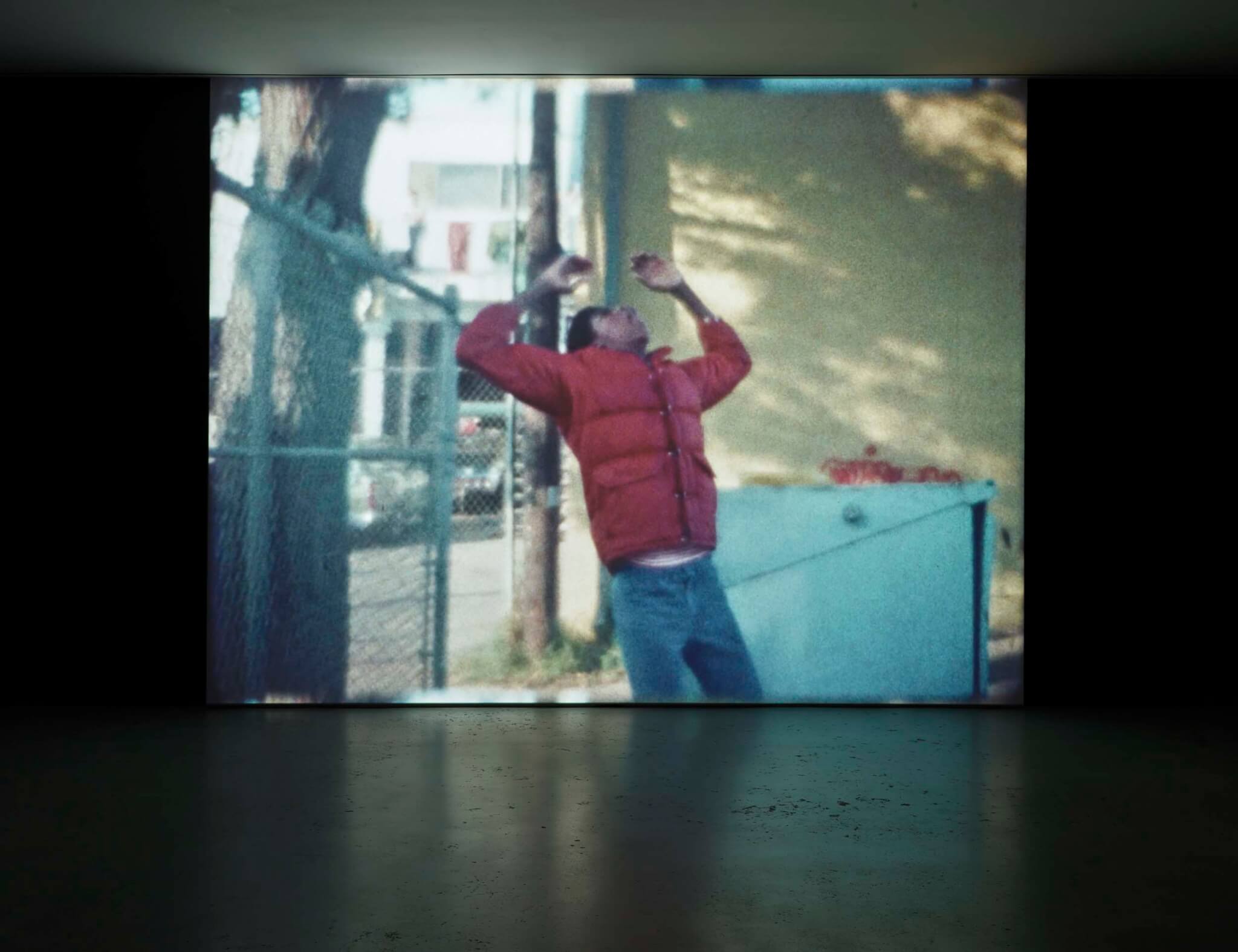You Don’t Have to Tell Me Twice
Mark Bradford
Hauser & Wirth
542 West 22nd Street
New York
Through July 28
Nearly ten years since his last solo show in New York, Los Angeles–based artist Mark Bradford has overtaken all three floors at Hauser & Wirth’s 22nd Street gallery. You Don’t Have to Tell Me Twice continues Bradford’s creative legacy as a methodical mixed-media painter and sensitive storyteller. Bradford’s newest collection of oversized paintings retains a familiar urbanism in their material technique and scale, and reveals how these methods can communicate deeply complex ideas of power and people. Culling art historical references, such as tapestries, Bradford surveys and reveals the seemingly unfamiliar yet not too distant nor forgotten histories of displaced African Americans.
Like much of his previous work, Bradford’s signature oversized canvases are thickly caked with media, with residues spilling over the unfinished edges. Sporadic hints at the detritus of everyday life poke through—a found rope here, a street advertisement there—prompting an alternative reading of urban spaces. This controlled chaos is resolved through strategic application and removal, blurring the boundaries between the human hand and entropic forces. It’s this oscillation that drives You Don’t Have to Tell Me Twice—a euphemism for “I already know.” As a gay Black man, Bradford doesn’t shy away from the relentless face of oppression. Instead, his work offers viewers a deeper look into how such powers manifest by scrutinizing history and the built environment.

A billboard-sized graphic declaring “JOHNNY BUYS HOUSES” welcomes visitors to the first-floor gallery. This generic phrase demonstrates the predatory financial systems in America’s real estate industry and its neocolonialist mentality of absolving “blighted areas.” With its false promise of a better life for all, Bradford peels back the layers to reveal the chaos in both the painting and an antiquated ideology. The title of the piece is also a play on American socio-spatial histories: Think Manifest Destiny.
I packed it up to escape, to save myself, and there he is again, ‘Johnny buys houses.’ Johnny was AIDS. Johnny was the KKK. Johnny was God, the preacher in the pulpit telling me I was sinful.
In a work that lurks just across the gallery, Bradford personifies this carnivorous quality in Johnny the Jaguar, in which aggressive surface techniques that lacerate and grind down the canvas reveal a hidden beast. The piece tells of “historical predation and the tendency for systems of exploitation to camouflage and adapt to any moment of social crisis.”
The gallery beyond thematically builds on systems of exploitation through distinctive references that find common ground in the medieval as a metaphor. The first is a study of European tapestries and the seated powers that commissioned them. Bradford dissects and then re-assembles their woven narratives into two long, boldly colored pieces: Fire Fire and Jungle Jungle. The second references the primal dynamics of predator versus prey. Three new paintings capture the Chihuahuan desert’s flora and fauna along with the settlement of Blackdom—the only self-built freedom colony and homestead in the U.S., located in Chaves County, New Mexico. Of the three pieces, Haint Blue—a name that references the blue porch ceilings of southern vernacular architecture—proves especially impactful in its recounting of the Great Migration. Among the gnarled media, a map becomes legible: the plots and street names of Blackdom.

Crowning the fifth-floor gallery, the exhibition’s titular work hangs among three expansive monochromatic canvases, forming a panorama of corroding infrastructural signage. Bradford documented the timetables of train schedules between towns and cities of the 1920s across America—a notable artifact of the Great Migration—with an oxidation technique that lends to the surfaces’ deterioration. At the center of this network, a sculpture of a body lies collapsed upon the floor, rendered in a distressed white and clothed in a puffy coat, jeans, and Nike shoes. Drawing a bodily parallel between the performative “dip” move of ballroom voguing and oppressive violence to Black bodies, Death Drop (2023) is a self-portrait of Bradford that forces viewers to contend with spatial and political realities as they circulate the paintings and the sculpture.

Moving from the fifth-floor gallery and 50 years into the past, a brief scene from Bradford’s prior Death Drop (1973) occupies a full wall on the second floor. Filmed on Super 8, the 20-second looped scene depicts a 12-year-old Bradford in the same puffy coat and jeans, now rendered in color, being struck by an imaginary bullet. The slow-motion image of his body falling through space predates Robert Longo’s well-known Untitled (Men in the Cities) series (1976–82), and maintains the spatial context of Bradford’s fictitious assault. Viewers watch the scene unfold in a back alley: Bradford’s body falls into a chain link fence, demonstrating how his choreography carries the cultural weight of Black identity in America.
Exiting Hauser & Wirth, the city is punctuated with a still of the falling young artist, incorporated into the exhibition’s advertisement. Bradford subverts the commercial media that saturates our shared built environment to remind us of the most vulnerable people who occupy it.
Courtney Coffman is a writer and an editor based in Princeton, New Jersey.











